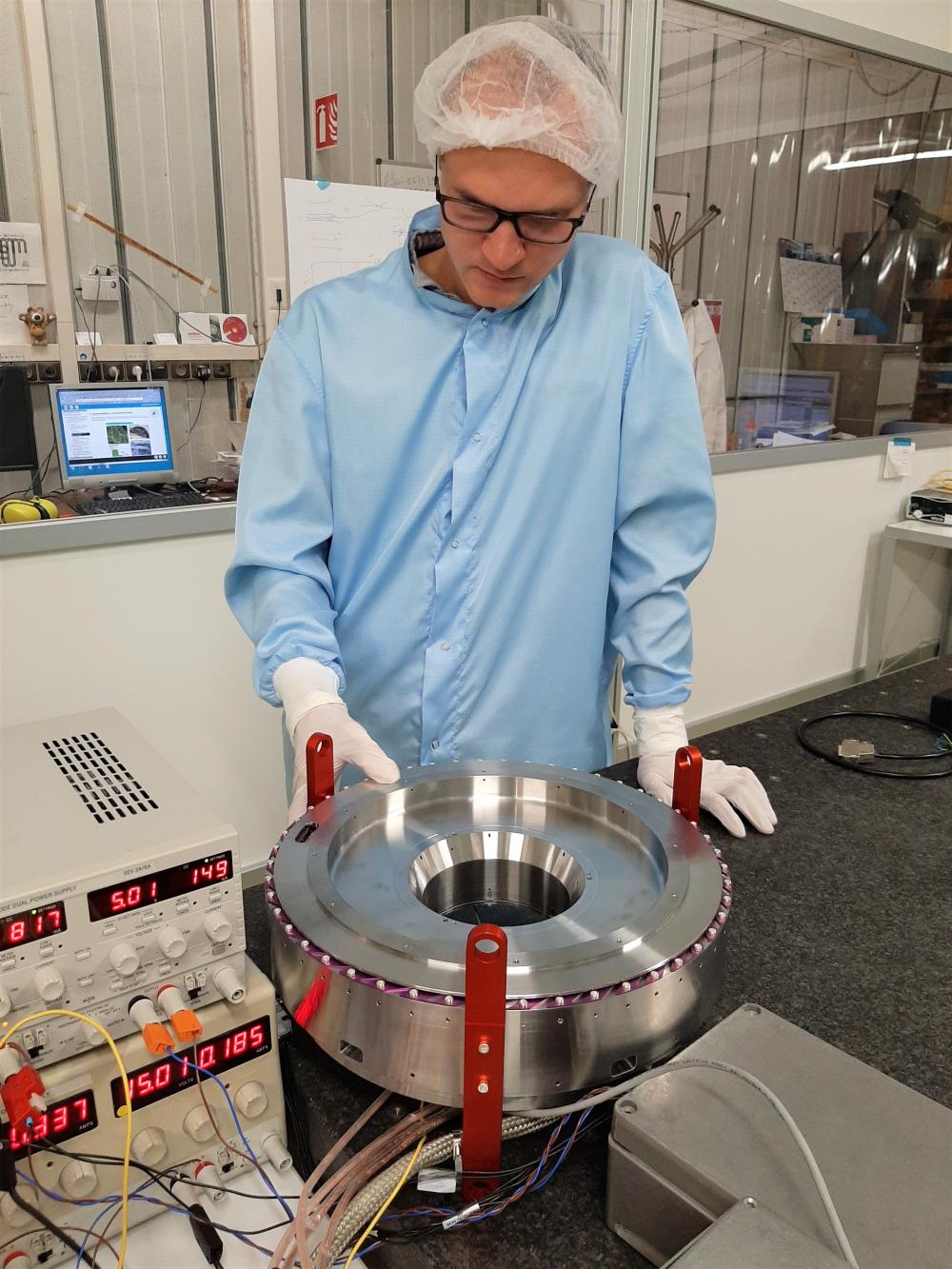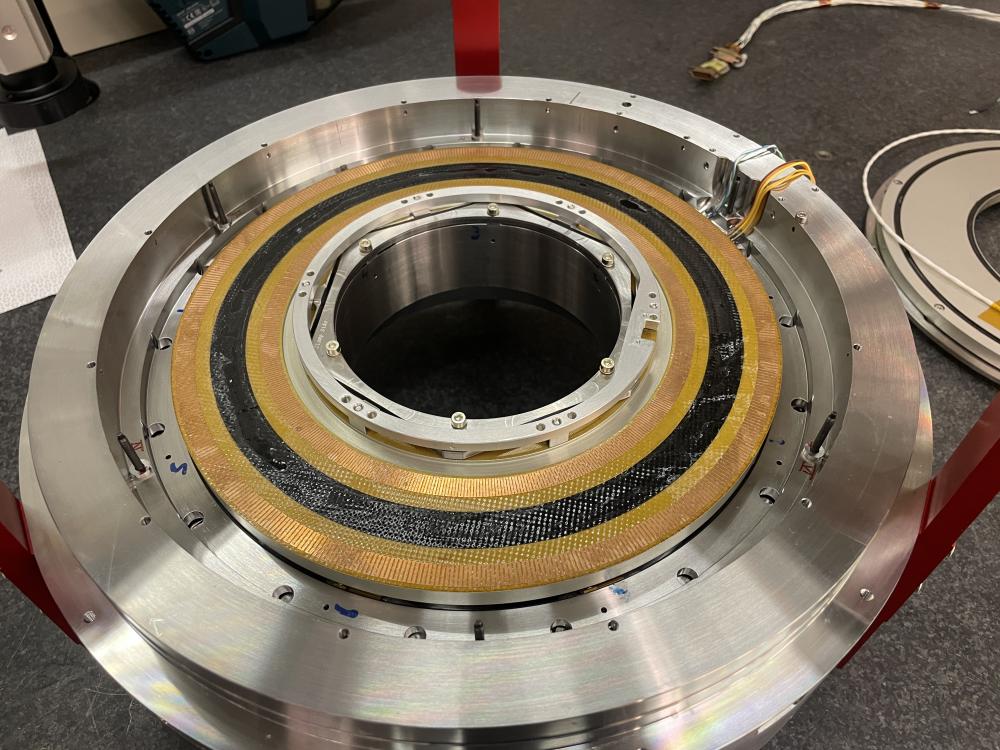Large ground-based telescopes with mirrors over 8 m in diameter1 use azimuthal mounts to point the stars. When tracking a star, the Earth's rotation causes the observed field on the astrophysics detector to rotate, creating "spun" images. To correct this effect, the instruments mounted on these telescopes use a "field derotator", a mechanism whose main function is to rotate a set of mirrors at very low speed and with very high precision. For the METIS instrument, CEA-Irfu has developed one of the world's very first2 derotators operating at -210°C. Entirely designed, developed and tested by the Irfu Systems Engineering Department, the METIS derotator drive achieves performance beyond the expected specifications. Currently in the testing phase, its qualification will be completed by the end of 2023 at ESO in Garching, Germany.
While the use of field derotation mechanisms is relatively common in ground-based astrophysics instruments, most scientific communities choose to place this mechanism upstream of the cryogenic instrument, so that it operates at ambient temperature. Doing this way, the required levels of accuracy (of the order of a few thousandths of a degree) are achieved using 'standard' components such as motorised stages, optical encoders, ball bearings and lubricated gearboxes.
To reduce the instrumental background noise, the METIS instrument of the future ELT will be entirely cooled down to temperatures around -210°C, so the field derotation mechanism will also have to operate at these temperatures in vacuum.
Based on its experience in developing cryogenic mechanisms (VISIR, MIRI, EUCLID), Irfu was selected to develop this cryogenic motorised unit.
It took five years of the Systems Engineering Department's skills, combined with those of the Astrophysics Department for quality monitoring and the cryomechanisms platform, co-funded by the IRFU and an DIM-ACAV grant, to bring to success a project with very ambitious technical objectives.
Entirely designed, developed and tested by CEA-Irfu, the METIS derotator has been built and is performing better than expected: it is capable of moving a 95 kg load at speeds as slow as 1 degree per hour (30 times slower than the hour hand on a watch) with a servo precision of less than 1 arc second rms, the equivalent of a pea seen from 1 km away. Its qualification will be completed at the end of 2023 with a lifetime test of 360,000 movements to be carried out in an ESO’s cryostat in Garching.
English subtitles available
1 Gemini 1 et 2: 8m, Very Large Telescope : 8.2m, Subaru: 8.3m,Large Binocular Telescope: 8.4m, Hoby Eberly Telescope: 9.2m, Keck 1 et 2 : 9.8m, Gran Telescopio Canarias: 10.4m et futurs Giant Magellan Telescope : 30m et Extremely Large Telescope : 39m.
2 The LINC-NIRVANA instrument also employs a cryogenic mechanism for field derotation. The driven load weighs 5 kg and rotates over an amplitude of +/-15° with an accuracy of 5 arc seconds rms.
Contacts : Jean-Christophe Barriere, Olivier Corpace, Mickael Lacroix.
• Innovation for detection systems › Detectors for both infinite physics
• Institute of Research into the Fundamental Laws of the Universe • The Systems Engineering Division




